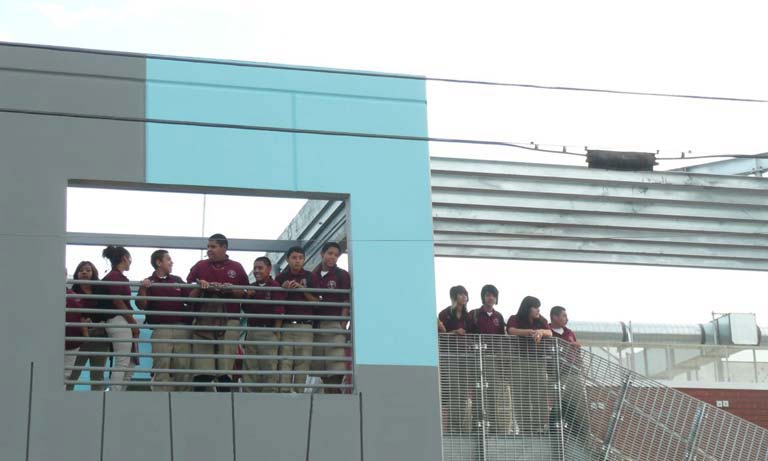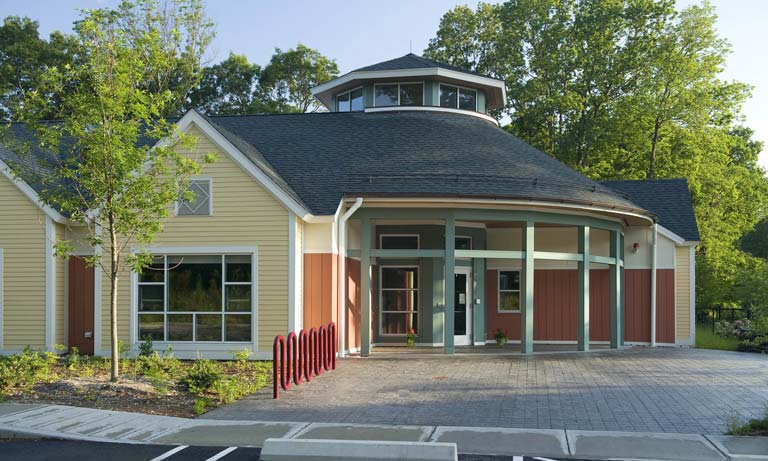

4
Education
Opening avenues to enriched learning and educational opportunities for children

“Access to quality education is a defining characteristic of a Sustainable Community. The future of neighborhoods eager to attract a diverse blend of residents, businesses and services is securely tied to the educational opportunities that are available to the families who live there. There is no clearer path out of poverty.
That’s why LISC has invested so heavily in schools and early child care centers, and has been expanding its partnerships with school districts, parent-teacher groups, colleges and universities, and after-school programs. Our goal is to make first-rate, local education an integral part of the community improvement arsenal.”
Schools & Early-Learning Facilities
Financed by LISC
303
Schools & Early-Learning Facilities
Financed by LISC
Invested in Education &
Early-Learning Facilities
$133.3M
Invested in Education &
Early-Learning Facilities
Children & Students Enrolled in
Schools & Early-Learning Facilities
67,500
Children & Students Enrolled in
Schools & Early-Learning Facilities
1
Green Dot Schools
Los Angeles, CA
The schools exemplify success in taking a green approach to planning, design, and operations in an urban setting ripe for adaptive reuse.
In Los Angeles, LISC has collaborated with Global Green USA on a pilot program that integrates green development and design principles into the construction of local charter schools. Providing over one thousand new seats for students in South Los Angeles, the shared campus of Ánimo Jefferson Middle School and Ánimo Ralph Bunche High Schools transformed two adjoining industrial buildings into a single 77,173 square foot LEED-certified educational campus.
The campus consists of 48 classrooms (including multiple science labs), a library, a multipurpose room, a gymnasium, and administrative office spaces. The adaptive reuse of existing buildings offered an inherently sustainable component to the development of the project. Many of the materials from the previous use were retained and repurposed, including the concrete floors. Added features include extensive daylighting, acoustical performance enhancements, energy- and water-efficient materials and strategies, and non-toxic paints, sealants, and other finishes.





The schools exemplify success in taking a green approach to planning, design, and operations in an urban setting ripe for adaptive reuse.
2
Propel Charter Schools
Turtle Creek, PA
LISC’s support of quality education helps build stronger, more sustainable communities.
LISC’s support of quality education helps build stronger, more sustainable communities. LISC’s Educational Facilities Financing Center made a $2.6 million loan for three Propel Charter Schools in Southwestern Pennsylvania. The loan included $1.1 million for the $4.3 million Propel-East School in Turtle Creek, which serves 400 students in grades K–8.
The school has an intense focus on providing its students with a holistic education. Annual events such as the Arts Festival and Science Olympiad, in addition to varied partnerships with community organizations, make Propel-East a fun and engaging place for students and parents. Despite serving children mostly from high-poverty, resource-poor communities throughout the Pittsburgh region, Propel Charter Schools earn some of the state’s most prestigious academic awards.





3
Good Shepherd Child Development Center
Milford, CT
It is one of many exceptional child care facilities built with
support from LISC.
Good Shepherd Child Development Center provides affordable child care for infants, toddlers and preschool children from working families. Offering technical assistance and financing, LISC was a major force behind the completion of the center. It is one of many exceptional child care facilities built with support from LISC, but it’s the first in the state to be LEED certified.
In the early stages of development, Good Shepherd's ultimate goal was to create a facility that would enhance the learning environment and provide more positive and meaningful experiences for the children who attend the center. Now, a large recreation room gives the children more opportunities to play and get exercise. Air conditioning, new sinks in every room and new bathrooms adjacent to all classrooms improve comfort and convenience for faculty and children. For parents, a library in the center offers resources and guidance for those children with specific needs.





4
KIPP Charter Schools
National
EFFC's strong national relationship with KIPP goes beyond financing and extends to thought leadership for the industry.
LISC has developed a deep national relationship with the KIPP Foundation and has financed KIPP schools around the country. As the largest charter management organization in the country, KIPP has recognized access to facility financing as one of its largest obstacles to growth. LISC's Educational Facility Financing Center has provided $8.1 million in grants, recoverable grants, loans, and guarantees to 25 KIPP schools to ultimately serve more than 11,000 students, including two loan funds specifically for KIPP schools: the KIPP Early Stage Revolving Loan Fund and the KCEP Mortgage Revolving Loan Fund. LISC participated in a pioneering Bond Credit Enhancement Program for KIPP Houston, a transaction that LISC configured using an innovative credit enhancement structure that is being used as a model for other charter school bond transactions across the country. EFFC's strong national relationship with KIPP goes beyond financing and extends to thought leadership for the industry.





5
Toledo School for the Arts
Toledo, OH
Toledo School for the Arts (TSA) is a community public school that focuses on the visual and performing arts. The school opened in 1999 and is located in the UpTown Arts and Entertainment District. The school enrolls grades 6th through 12th and accepts enrollment of any Ohio secondary student with no tuition costs. Classes are offered in dance, music, theater and visual arts, in addition to the full load of academic subjects that is required for students.
A $1 million renovation was completed in 2008, which included a new dance studio, 10 new classrooms, a theater, gallery, new cafeteria, and a technology lab. As a result, enrollment has increased and is now at 550 students with 80 teachers. Just recently, they had a little over 300 prospective students apply for 85 openings for September 2011.




TSA has been recognized by the U.S. Department of Education as one of 320 No Child Left Behind Blue Ribbon Schools for 2008 and with a 100 percent graduation rate and a consistent rating of Excellence in standards testing, TSA has become one of the top charter schools in the nation.